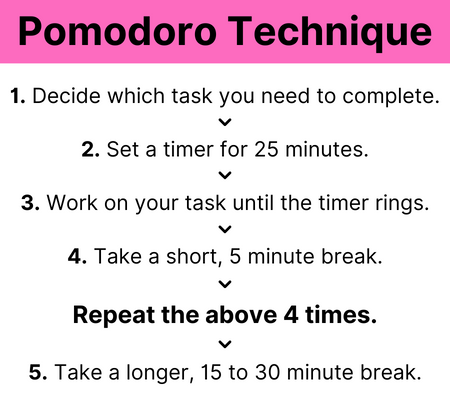What Is Timeboxing?
A time management technique all project managers should explore.

Have you ever fallen victim to procrastination? Or maybe started out a project with so much zeal just to get crushed by daunting deadlines? The truth is, very few people start out a project intending to finish late or extend time limits. Still, somehow, time finds a way to get the best out of even some of the most competent project managers.
Timeboxing is one innovative way to maximize results while sticking to a schedule. When using agile or scrum practices, timeboxing can help reduce long planning hours. It should also reduce procrastination, boost productivity, and give your team enough time to complete tasks. But first…
What Is Timeboxing?
Timeboxing is a practical time management strategy that helps you organize tasks in a fixed yet realistic timeframe. The term was coined by James Martin, the celebrated author of the book “Rapid Application Development.” It was part of agile’s software development and has since caught on as more than a fancy word.
Rather than taking on tasks one at a time, timeboxing allows project managers to shift the focus from tasks to time. To timebox, you have to schedule specific minutes or hours for each activity. You are only allowed to use this allocated time to complete each task. It’s a time-efficient way to manage the daily workload, especially when using agile and scrum approaches.
Advantages of Timeboxing
The ultimate goal of timeboxing is to ensure you have manageable chunks of tasks completed in a realistic scale of time. It’s one life hack professionals have employed in their personal lives. Yet, it works even better as a productivity tool for teams that love getting both larger tasks and mini-tasks done on time.
Additionally, productivity experts have stated that tasks are better managed when completed in consecutive time bits. Doing this reduces the total time spent on the said task. Take, for instance, the Pomodoro technique, which is part of timeboxing. You could choose to engage your team for 25–30 minutes, then take a five-minute break before continuing the task.

Other major advantages of timeboxing include:
- Enhanced focus: It’s always easier to focus on completing one task at a time. That way, project managers would be more confident about the full attention given to each task.
- Scope: Working on well-defined goals helps you see how much each task compliments the entire project.
- Clarity: Just like to-do lists, timeboxing techniques give clarity to the project manager and the team at large. It draws out a practical sketch of the project deliverables and outcomes, and their deadlines.
Ultimately, timeboxing helps you save time and increase productivity.
4 Steps to Timeboxing
Now that you know the benefits of timeboxing, the next question is this: How exactly do you implement this time management technique?
Here are the steps you need to follow:
1. Set Goals
It’s always better to set attainable goals before using the timeboxing approach. This will help you visualize the entire project before breaking it down into bits. Don’t worry. It’s not as complicated as it sounds. Simply decide on the tasks, think about how to accomplish them, and how much time should be allotted to each.
The first stage is usually determining what the long-term goal is, and then deciding the major steps it will take from start to completion. This will help you realistically schedule the time for each assignment. Setting goals also keeps your team informed on what they need to do at every point in time. For example, they wouldn’t schedule private meetings or come up with other matters during scheduled focus time.
When running an agile or hyper-agile team, it’s equally crucial to set SMART goals. So, your goals should be specific, measurable, actionable, realistic, and timely.

When you use SMART goals during the planning process, you can create a straightforward roadmap to reach them.
2. Identify Tasks
Identifying one task per time slot helps you gain control of your schedule. This is very crucial, as good control boosts positive thinking during tasks. When interruptions abound, it’s very easy to feel less confident about the progress of the project.
That’s why timeboxing is an essential technique for product managers. It helps you prioritize tasks, and one way to do this is by taking them on one by one.
You should base your tasks on your goals. Let’s say you’re starting a business in Montana. To achieve that goal, your tasks would be:
- to pick a business name
- get a registered legal counsel in Montana
- obtain an Employee Identification Number (EIN)
However, it’s up to you to take out any distracting tasks from the calendar to ensure a task-focused timebox. One such task can be to check on the progress of your team members. This is where project monitoring becomes crucial. Instead of following up with everyone, use progress-tracking software to see where your team stands. This will help you free up your time for more important tasks.

You should also check whether there are tasks you can lump together so you can allot less time to completing them. For instance, one of your tasks might be to create a business card, another might be to make copies, and another might be to distribute these cards physically.
To save time, you could distribute a single digital business card to your contacts instead. What is a digital business card? It’s an online file that stores your contact details. It helps you save a lot of time since you can distribute it to many people with just one click.

Discover the ultimate task management tool.
Sign up for free today!
3. Allocate Time
Once the initial planning stage is completed and you have chosen your tasks, the next step is to schedule the time to complete each task. If you are familiar with time blocking, allocating time is slightly the same as the second step in this time-management technique.
The difference between time blocking and timeboxing is the number of tasks. A time block assigns a certain amount of time to a set of tasks. On the other hand, timeboxing involves assigning time to each task with short time bursts for each one.
To put it simply, the allocated time determines when you start working on a specific task and when to stop. It’s always better to mark the start and stop times to stay efficient and disciplined throughout the workday.

The tasks you have little to no motivation to work on should come first on your timetable. These tasks are usually a lot more daunting than the regular ones. It may be smart to get them out of the way before dealing with the less overwhelming ones.
Let’s say there’s an important ad or blog post that needs to be completed before the end of the week. It’s easy to procrastinate and avoid doing that task, especially if it’s a demanding one. However, timeboxing it as one of the first tasks and placing time limits on your calendar ensures it’s completed on time.
It’s also important to input a realistic and strict limit. This keeps you disciplined and subsequently enhances your workflow. For example, in the image above, the individual is allocating about two hours to work on the writing part of the medium post. Also, notice how the calendar has a good mix of serious work and recreational activities as well.
4. Work and Evaluate Results
Once you have properly planned and scheduled the necessary tasks on the calendar, it’s time to start working on them. Just ensure you diligently start from the first task, adhere to the time limits, and work your way down.
Also, consider setting alarms or reminders so your team can work within the allotted time frame. There are two types of time boxing—hard timeboxing and soft timeboxing. These terms explain how a team or individual handles the time limits of a timebox. Do you stop immediately after the stipulated time? Or allow for extra time so the team can finish up the task?

As the name implies, hard timeboxing requires a lot of discipline, as the team leader must ensure that time boxes end immediately after the time limit is reached. Soft timeboxing, on the other hand, is an approach that allows some adjustments beyond the stipulated period of time.
So, if the goal was to spend two hours writing a post, once that time elapses, stop and then assess your results. You can do this by taking notes, recording voice notes, and using other metrics to track productivity. Then based on what you find, make the necessary adjustments. For instance, if you see the time allocated to a specific task wasn’t realistic, make changes to your initial timetable.
Final Thoughts
Timeboxing is valuable for people who take efficiency and consistency seriously. It’s even more useful to project management teams that want to stay on the same page throughout the project’s lifecycle.
You learned the steps to proper timeboxing. Set goals, identify your tasks, allocate time, and work and assess your results. You should also make changes where necessary based on your initial assessment of your team’s performance.
If you follow these tips, you and your team will reap the benefits.
About the author: Jon Morgan is the founder of two successful e-commerce and SaaS businesses. He’s passionate about sharing what he has learned from working with business owners through Venture Smarter.
FREE 20 MIN. CONSULTATION WITH A PROJECT MANAGEMENT EXPERT
Wanna see how to simplify your workflow with Zenkit in less than a day?
Book a Live Demo